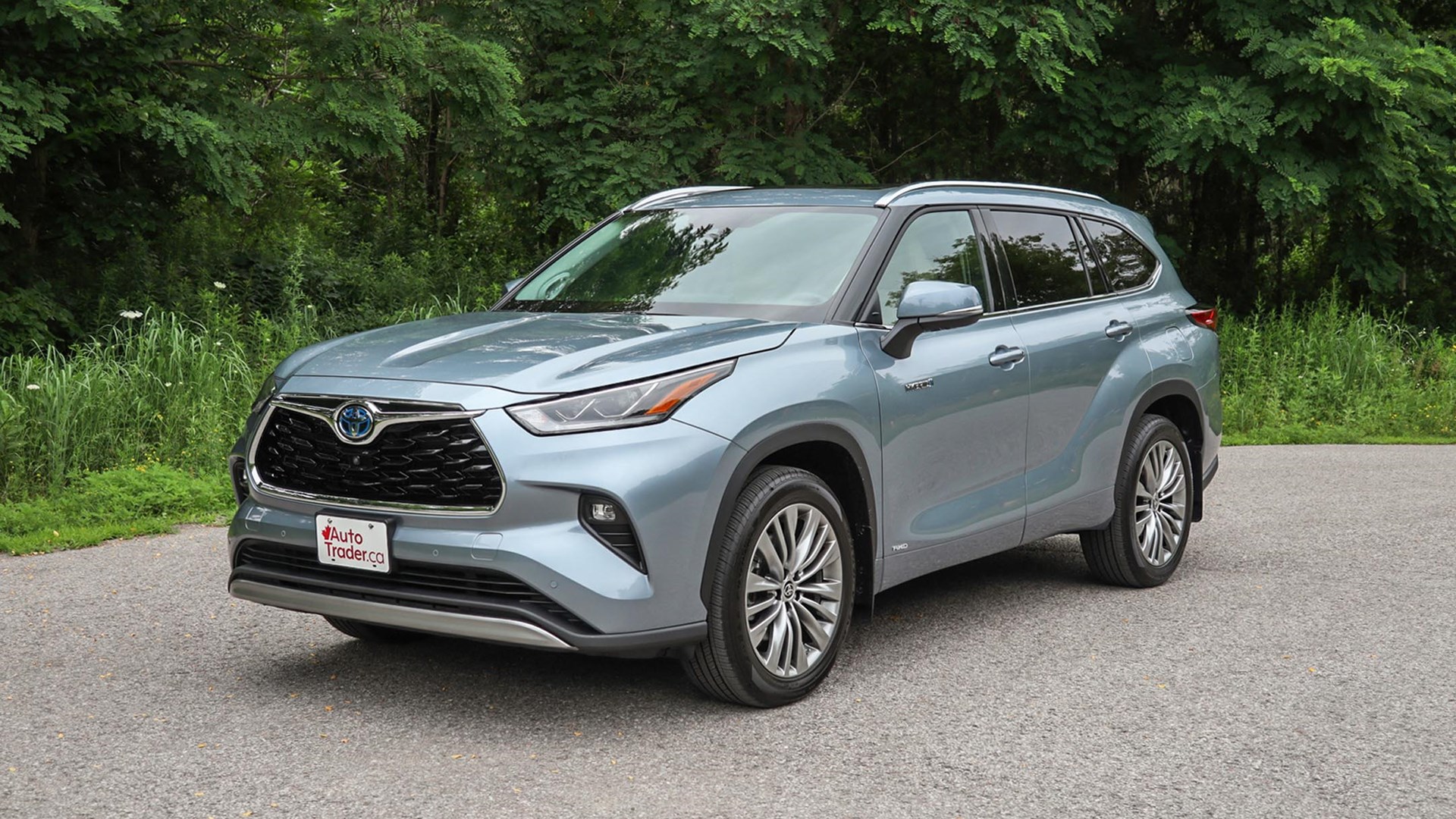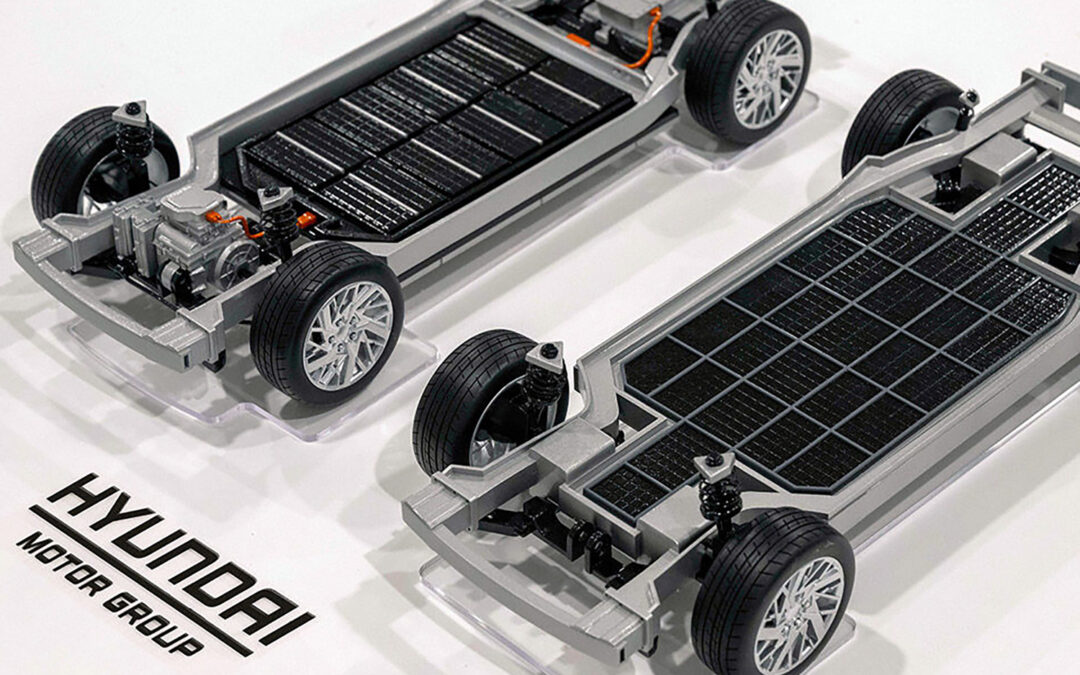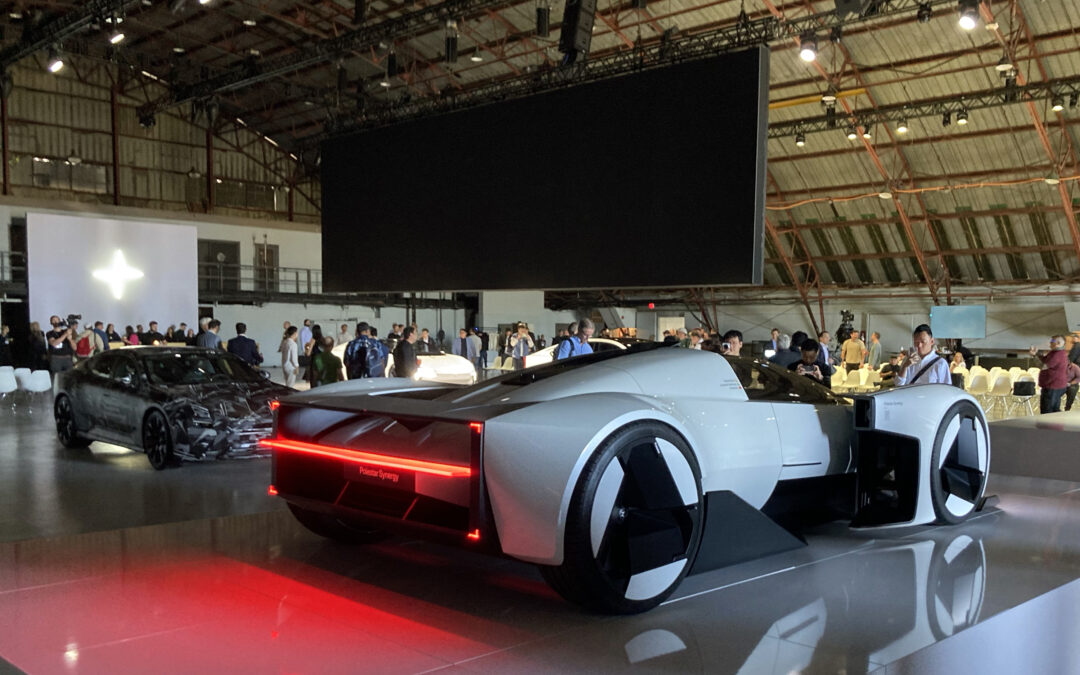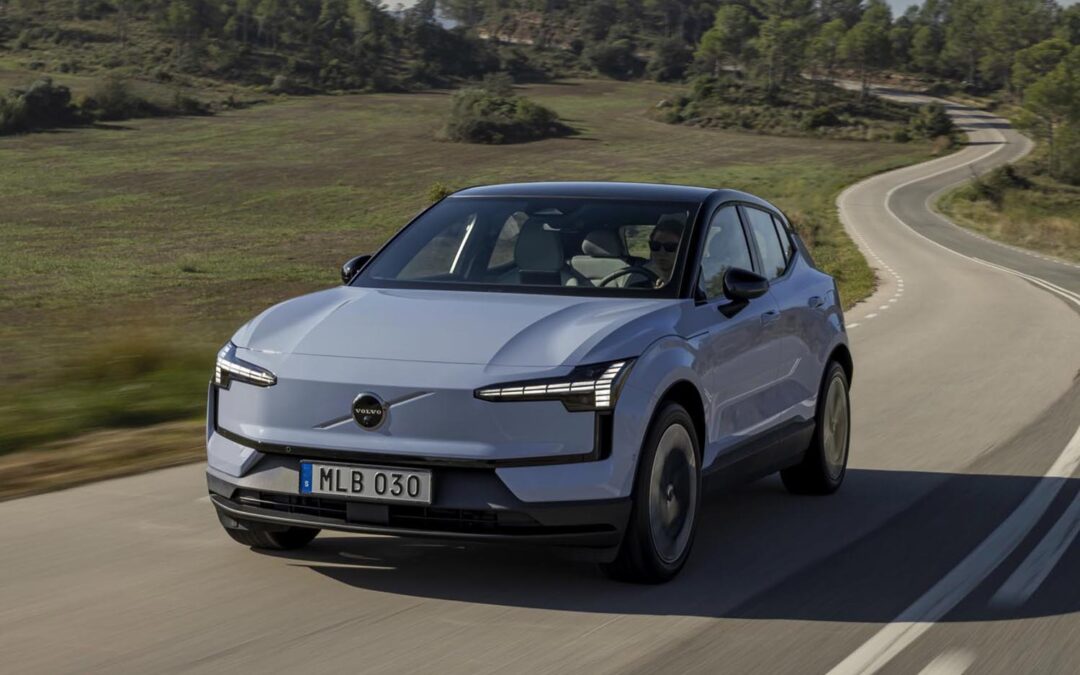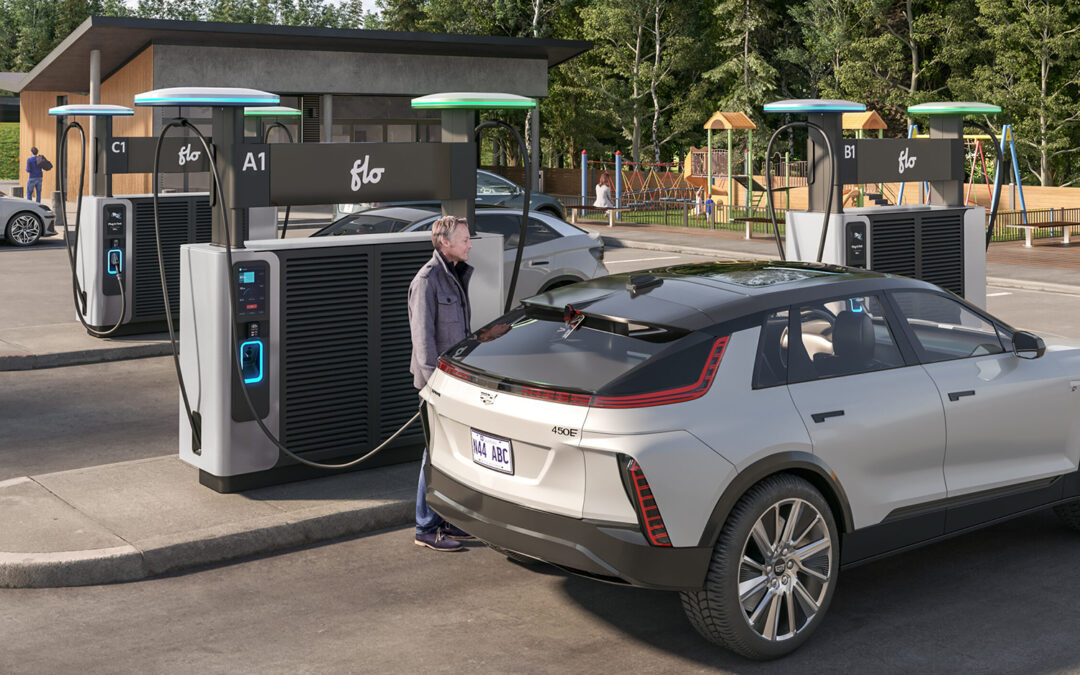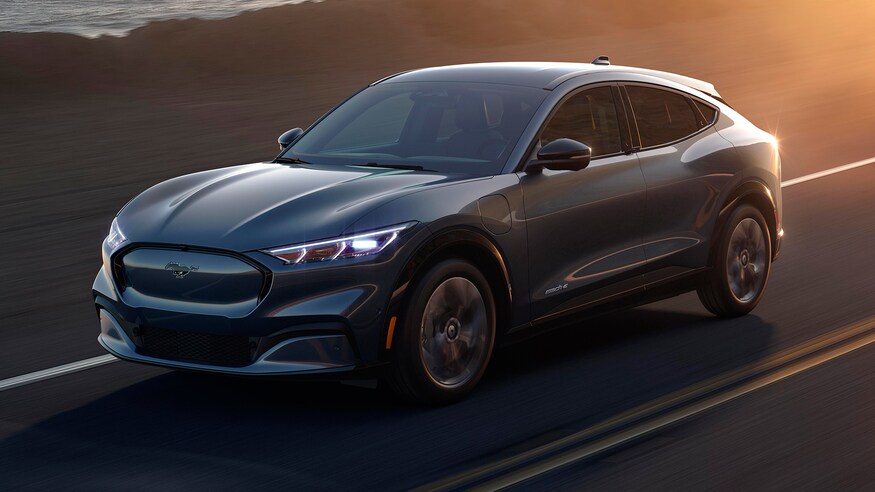Hybrid technology has become ordinary enough that it can be had in a variety of vehicles, including family-friendly ones like the 2021 Toyota Highlander Hybrid.
It comes in three trim levels, all with all-wheel drive, starting with the LE at $47,790 including a non-negotiable $1,840 freight fee, followed by the XLE at $50,290. My top-of-the-line Limited tester starts at $55,990. It was further optioned with a $2,300 Platinum package and $255 coat of Moon Dust blue paint, bringing it to $58,545 before tax.
Styling: 7.5/10
Styling is always subjective, but when the Highlander was redesigned for 2020 some elements got a little too exaggerated, like the big-maw grille with enormous winged badge, and the thick haunches over the rear wheels, which remind me of a bodybuilder’s exaggerated thigh. That’s offset by rear styling that’s more interesting than before, including a wide tailgate opening for easier cargo loading.
But the angular styling works inside, including an infotainment screen that seems like it’s floating on its right-side attachment, a well-proportioned centre console, and curvaceous door panels and handles. But even here, less would have been more; my tester’s dash of cream, grey, and brown hues would look more elegant with two colours instead of three.
Safety: 9.5/10
The Highlander earned the top five stars from the United States National Highway Traffic Safety Administration (NHTSA), while the Insurance Institute for Highway Safety (IIHS) gave it the highest Top Safety Pick+ designation. All trim levels include blind-spot monitoring with rear cross-traffic alert (the Limited trim will brake for it if necessary), a host of airbags, and a government-mandated back-up camera.
For 2021, the Highlander gets Toyota’s upgraded advanced safety suite that includes adaptive cruise control with lane-centring, automatic high-beam headlights, emergency front braking with pedestrian and cyclist detection, and lane-keeping assist. The latest system further adds stabilizing steering assist during emergency braking; enhanced lane centring; and the ability to automatically slow down on curves as needed when adaptive cruise control is engaged.
Features: 8/10
All Highlander Hybrid models include tri-zone automatic climate control, power-adjustable heated front seats, a power tailgate, Apple CarPlay and Android Auto, and automatic LED headlights. The mid-range XLE also adds a sunroof, auto-dimming mirror, and remote starter.
At my Limited level, there’s a wireless charger, rearview mirror video display, navigation, leather upholstery, heated and ventilated front seats, a heated steering wheel, panoramic sunroof, hands-free tailgate, and 110-volt outlet. The Platinum package, at $2,300, adds a head-up display, rain-sensing wipers, surround-view monitor, premium stereo, and unique 20-inch wheels. It also replaces the second-row bench with captain’s chairs, so you have to go all the way to the top if you prefer seven-passenger seating rather than eight.
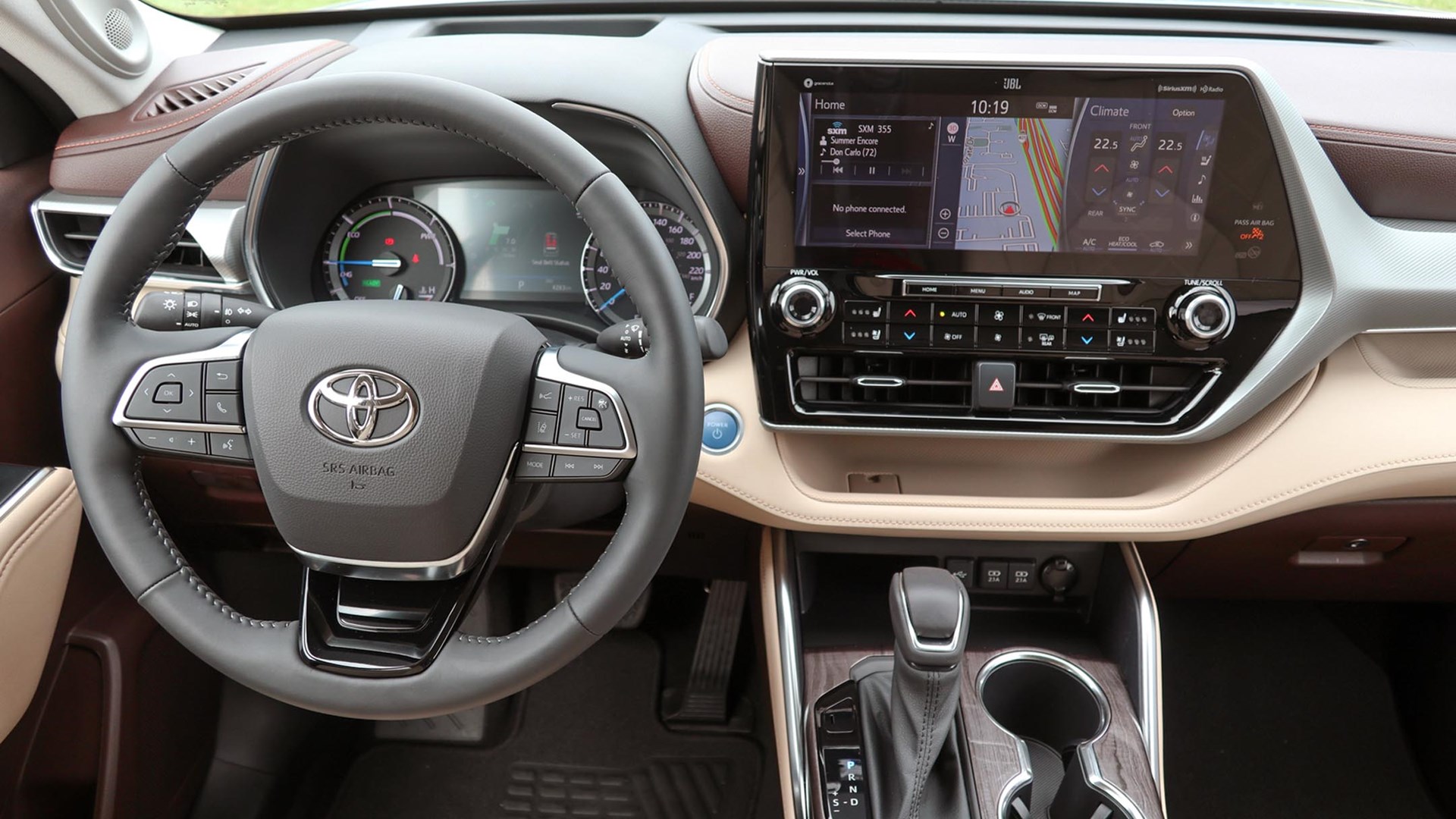
User Friendliness: 7/10
The tablet-style infotainment system is split-screen, and you can bring up three functions at a time, such as stereo, navigation, and climate. That climate system is also accessed with buttons below (as is radio volume/tuning, but these knobs have surprisingly sharp inner edges), but while there’s a toggle for the fan speed, there’s none for the vent mode, and you have to tap a screen icon to adjust it.
Well, you tap the icon if you can see it, that is. The screen is glossy glass, and on a sunny day, the glare wipes it out. Several times during testing I was unable to see anything on it, and while that’s bad enough when I just want to know what song is playing, it’s worse when I want to adjust something. However, when you can see the screen, the icons are large and easy to use, and you move the split-screen functions by simply swiping them.
Practicality: 8/10
As with most three-row sport-utilities, the Highlander Hybrid is most practical in the first and second sets of seats. Small-item storage up front is good, including two trays molded into the dash, including one with a pass-through to store your phone above and then snake the cord to the outlets below.
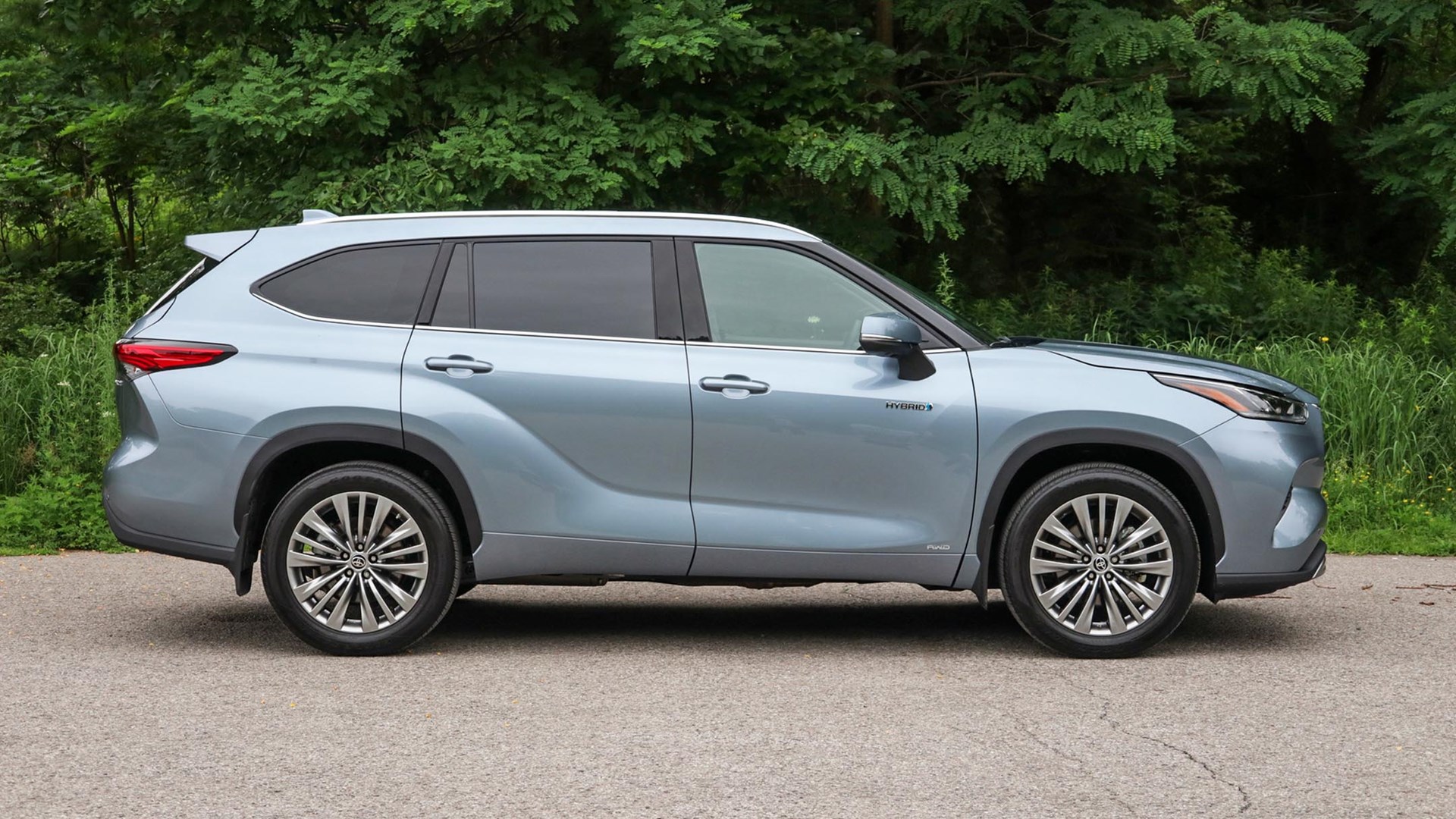
At 453 L of cargo volume with the third row up, you should have no problem packing in groceries or gear, and the wide opening makes it easy to load. It’s also simple to fold or raise the third row. However, the second-row captain’s chairs – an option in my tester – proved a bit trickier. The release buttons were stiff and I was afraid to pull too hard on them, since their plastic tabs felt flimsy and I was afraid of snapping one off.
Comfort: 8/10
As with most three-rows, you’re better off sitting ahead and letting the young ones bring up the rear. This third row is only raised slightly above the floor, so you’re sitting with your chin on your knees. It’s a squeeze to get back there, and one benefit with the captain’s chairs is that you can easily get in and then walk between them to the third row.
I found the front seats comfortable for running most errands, but the cushions are short, and my back got stiff on a longer trip. Headroom is about average among SUVs this size, and the front foot wells are roomy.
Power: 8.5/10
The Highlander uses a 2.5L four-cylinder that makes 186 hp and 175 lb-ft of torque, and when it’s combined with the trio of electric motors, you get a total of 243 hp. It’s mated to an automatic continuously variable transmission (CVT) and drives the front wheels. When all-wheel is needed for extra traction, an electric motor powers the rear wheels.
The hybrid system recharges its battery with regenerative braking, and doesn’t get plugged in. It automatically switches between gas, electric, or a combination of the two, depending on what’s best for the driving situation. Those power numbers are smaller than some sport-utilities, but the Highlander Hybrid feels peppy, and with more than enough passing power. Should you need to bring more stuff than you can fit inside, it can tow 1,587 kg (3,500 lb).
Driving Feel: 8/10
The Highlander Hybrid is a very pleasant vehicle to drive. It’s not quite as quick to move over to electric power as the smaller Toyota Prius is, but then it’s also larger and heavier. There’s an EV mode button, but it’s rather pointless – it puts the system into electric-only operation at low speeds, but it’ll do that on its own anyway, and it deactivates if you apply even moderate throttle. The so-called “trail” mode optimizes the all-wheel drive system and brakes for bumpy, unpaved roads.
The steering is smooth and responsive, and with the hybrid battery’s weight lowering the centre of gravity, it handles well around curves. Hybrids can sometimes have a strange brake pedal feel, but Toyota’s pretty much solved that problem, and the Highlander’s brakes feel conventional and stop confidently.
Fuel Economy: 9/10
The Highlander Hybrid is officially rated by Natural Resources Canada (NRCan) at 6.6 L/100 km in the city; 6.8 on the highway; and 6.7 in combined driving. In my week with it, including a long highway trip – where hybrids don’t get their best mileage because they can’t run on the battery as much – I still hit right on the dot at 6.7 L/100 km.
The Highlander has very little direct competition. The Ford Explorer Hybrid offers three rows, but it uses a V6 engine, and its combined rating is 9.6 L/100 km. The Highlander also bests the similarly sized two-row Hyundai Santa Fe Hybrid, at 7.4 L/100 km, and is only slightly less efficient than the smaller Toyota RAV4 Hybrid, which rates 6.0 L/100 km.
Value: 8/10
The Highlander Hybrid runs from $47,790 to $58,290, but it’s hard to cross-shop it head-to-head because there isn’t much else in the three-row all-wheel hybrid category. The Ford Explorer qualifies for both, but only as an upgrade on the Limited trim, where it’s $55,929 with freight but before tax.
The Hyundai Santa Fe Hybrid undercuts the Highlander with a starting price of $43,324, but it only has two rows. That’s the same seating as the Mitsubishi Outlander PHEV – which offers electric-only driving range after it’s plugged in – which runs from $46,098 to $54,098, though it qualifies for government incentives the Highlander doesn’t.
The Verdict
Despite a few quibbles I have with it, the 2021 Toyota Highlander Hybrid’s popularity is earned by its fine driving characteristics, quiet cabin, long list of features, and impressive safety ratings. If the regular V6-powered Highlander is on your cross-shopping list, consider the hybrid. For each trim level, it’s an extra $2,000 to move up, but NRCan estimates you’ll save $900 a year in fuel to make up the difference. Drive them both to see if gas–electric is the choice for you.
